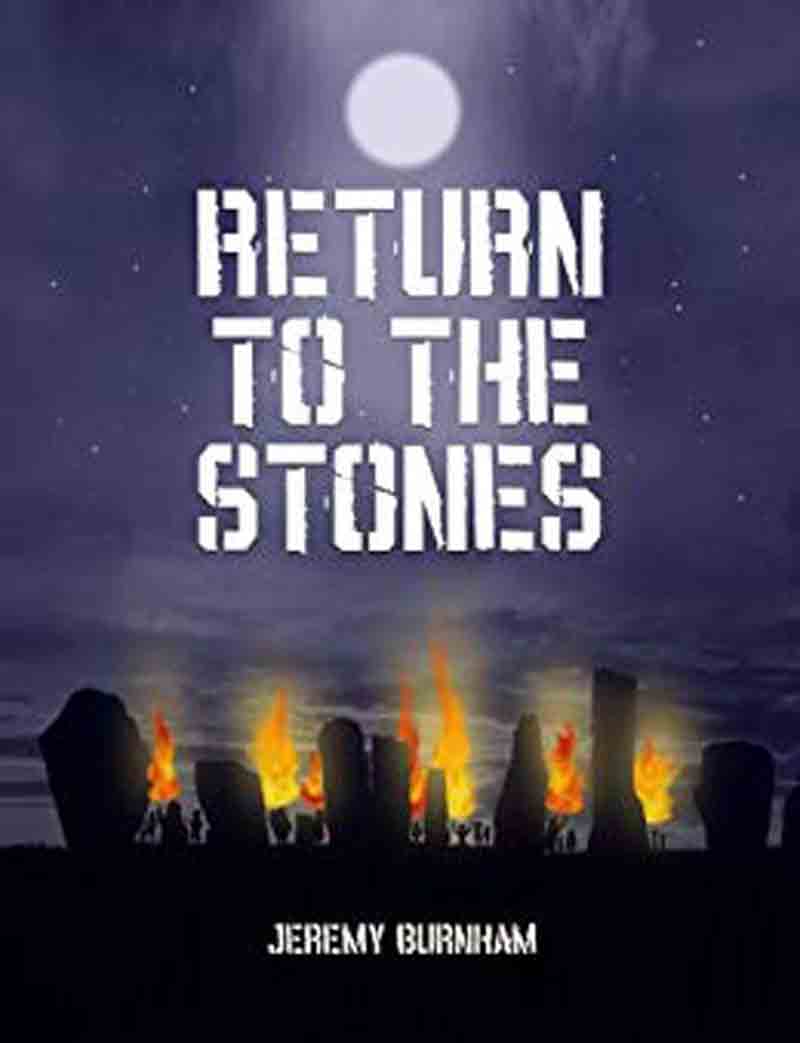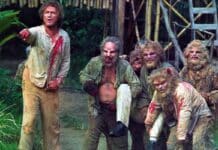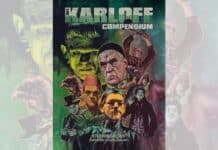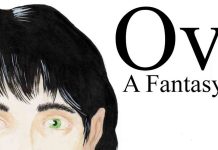Jeremy Burnham’s Return To The Stones is the 2013 sequel to Children of the Stones. CHRIS NEWTON takes a look…
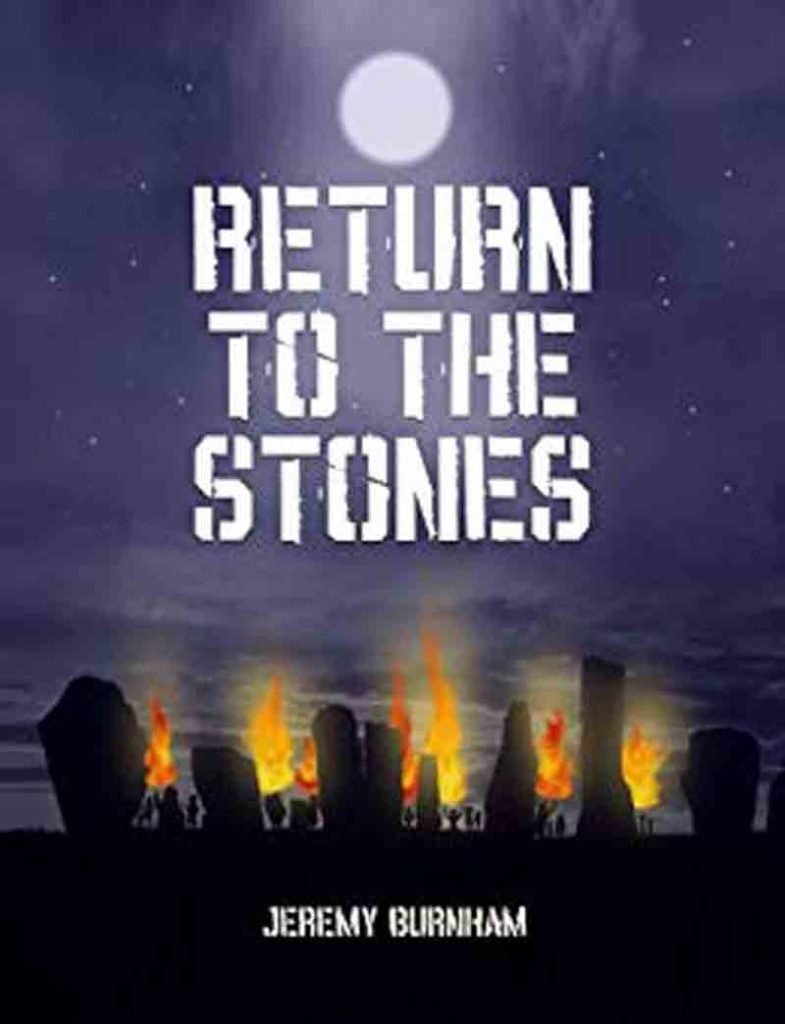
In 2013, the co-creator and co-writer of ‘Children of the Stones’, “the scariest programme ever made foe children”, surprised everyone by releasing a sequel in the form of a novel 36 years after the transmission of the original cult classic.
There’s something about ‘Return to the Stones’ that reminds me of Alan Garner’s ‘Boneland’, the much belated sequel to his acclaimed 1960 children’s fantasy novel ‘The Weirdstone of Brisingamen’.
Finally published in 2012, ‘Boneland’ revisited Colin, one of the original’s child protagonists, now an adult professor working at Jodrell Bank.
It’s a bizarre novel that mixes mythology with psychotherapy and hallucination, simultaneously implying that the events of the original novels both did and didn’t take place. Much like the time-looped inhabitants of Milbury…
Matthew is now an adult professor
Like Colin, Children of the Stones’ Matthew is also now an adult professor, an astrophysicist at MIT, recently divorced and balancing his work with raising his teenage son, Tom.
For the first time in his life, Tom is about to leave the United States and visit England – Milbury to be precise, where much has changed since 1977.
The evil Magus Hendrick is gone, the villagers have no memory of their ‘happy’ days, and Matthew’s father, Adam Brake, now lives in the manor house which once belonged to Hendrick.
Return to the Stones reads like a children’s book
Unlike ‘Boneland’, which aged with its audience, going from children’s fantasy to something so experimental and avant-garde it borders on poetry, ‘Return to the Stones’ reads very much like a children’s book.
The writing style is sparse and simplistic with certain ‘adult’ themes (such Matt’s divorce, the death of Sandra’s mother Margaret and husband Jean since the events of the original series) glossed over without any great emotional weight.
And whilst it is great, as a fan, to see the return of characters such as Mrs. Crabtree and Dai the poacher (now a morally ambiguous druid priest), it does somewhat beggar belief that they would still be alive several decades on.
Return to the Stones stands on its own
That said, despite its constant references to the original, the story does actually work very well on its own merit, beginning as what appears to me a re-treading of familiar ground eventually becomes something different entirely.
Whilst Hendrick was harnessing the energy of Ursa XB1, the black hole that Milbury’s stone circle was aligned to, Return to the Stone’s villain, the mysteriously ageless Professor Jarman’s aim is something else entirely, and the energies of the stones are being harnessed by forces from beyond the stars.
Sandra, Matthew’s classmate from Children of the Stones, is also back, currently curating the local museum as her late mother once did.
After a tragically short marriage, she too has returned to Milbury with her adopted daughter Su.
It’s all getting a little confusing
I must admit that I started to get a little confused at this point.
Obviously, Matthew (now the same age as Adam was in the series) visiting Milbury with his teenage son is a deliberate parallel with the original, duality being one of the main motifs in Children of the Stones, but there isn’t a great deal of characterisation or variation in the dialogue to helpfully distinguish between the three relatively interchangeable characters of Adam, Matthew and Tom, which certainly isn’t helped by the fact that Adam and Matthew share the same profession, with Tom being a budding astrophysicist, too.
There are times when the narrative switches between Tom and Su conversing and Matthew and Sandra conversing, and I found myself forgetting who was actually speaking. Again – this was probably intentional, but the fact that there are budding romances between both Tom and Su and Matthew and Sandra didn’t make it any less muddled.
Not to mention that the romance between Su and Tom feels slightly disturbing as they both refer to Adam as their grandfather. It’s not as bad as it sounds – Adam married Margaret after the events of the original, making Sandra his step-daughter, and Sandra then adopted Su, so nobody is technically related by blood, but still, it feels messy.
The ‘Happy Ones’ are possessed
Whilst the ‘Happy Ones’ in Children of the Stones were described as being “possessed”, that concept is taken to a much further extreme in this novel, with the evil Jarman (whom, they discover, has appeared throughout history as ‘The Count of St. Germain’) taking over Tom’s mind, and even trying to achieve a terrifying ‘symbiosis’, to the point that his body begins to transform.
Whilst this may be an unfair comparison, by pure coincidence the novel I had finished reading before picking this one up was William Peter Blatty’s ‘The Exorcist’, and I’m afraid to say that the demonic possession elements of ‘Return to the Stones’ greatly suffered in its shadow.
But whilst Burham’s writing style is not the most florid, there is no denying the creepiness of the imagery, particularly a brain surgery scene in which a grotesque white squid-like creature is removed from Tom’s frontal lobe.
This, coupled with bizarre visions of Sumerian fish-gods burying something beneath the Milbury circle, does make me wonder what this would have been like as a TV series.
With actors able to flesh out the sometimes stilted, overly-expositional dialogue, would it have been as memorable and nightmarish as its predecessor? Quite possibly.
That said, there are times when the character of Adam really shines through, and it’s impossible not to hear the late great Gareth Thomas delivering his lines, particularly when raging at technology, or ‘Dame Electronica’ as he puts it.
And therein lies the tragedy, there is nobody else who could fill that role, so a live action adaptation seems unlikely. (Although Katherine Levy, who played Sandra in the original, did allude to reprising her character for an audio adaptation. Big Finish, perhaps?)
Conclusion
‘Return to the Stones’ is by no means a bad book, it simply fails to be to literature what its predecessor was to television. It’s a great story, and an enjoyable read, but one that will probably only be truly appreciated by die-hard fans of the original.
You can buy Return to the Stones from Amazon here.


